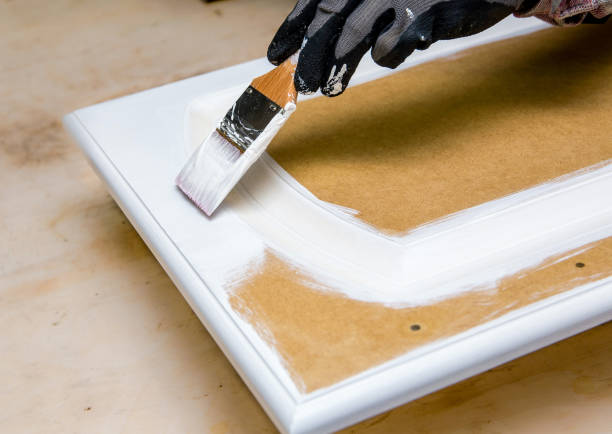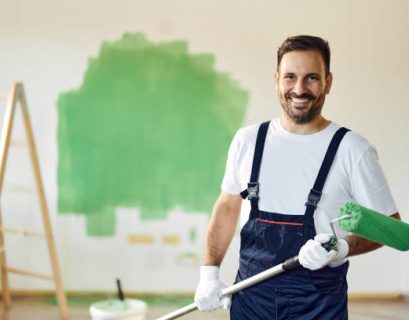Cabinet painting is one of the most cost-effective ways to breathe new life into your home or workspace. Whether you’re upgrading your kitchen, bathroom, or office, a fresh coat of paint can dramatically enhance the look and feel of the area without the expense of a full replacement. In this guide, we’ll explore the benefits, process, and tips for cabinet painting in Denver CO while answering common questions to ensure your project is a success.
What Is Cabinet Painting?
Cabinet painting involves refinishing your existing cabinets with high-quality paint, giving them a brand-new appearance. Unlike replacing or refacing cabinets, this process focuses on updating the surface while preserving the original structure. This option is perfect for homeowners seeking an affordable and environmentally friendly upgrade.
Benefits of Cabinet Painting
Cost-Effective Solution
Painting cabinets is significantly cheaper than replacing them. It’s an excellent choice for those on a budget who want to achieve a premium look.
Environmentally Friendly
By repainting your cabinets, you reduce waste and contribute to sustainability by reusing existing materials instead of discarding them.
Customizable Aesthetics
With countless color options available, you can customize your cabinets to match your desired style, whether it’s modern, rustic, or traditional.
Quick Turnaround Time
Cabinet painting typically takes less time than a complete replacement, meaning less disruption to your daily life.
Essential Preparations for Cabinet Painting
Preparation is the key to a flawless finish. Here’s how to get started:
- Clean Thoroughly: Remove grease, grime, and dirt with a degreaser to ensure the paint adheres properly.
- Remove Hardware: Take off cabinet doors, hinges, and handles for better access to surfaces.
- Sand the Surface: Lightly sand to remove the glossy finish and create a texture for the paint to stick.
- Repair Imperfections: Fill in dents or scratches with wood filler, then sand smooth.
Types of Paints for Cabinets
Choosing the right paint is crucial for durability and aesthetics.
Latex Paint
Known for its easy application and low odor, latex paint is a popular choice for cabinets in residential spaces.
Oil-Based Paint
Oil-based paints offer a durable finish, ideal for high-traffic areas like kitchens. However, they require longer drying times.
Chalk Paint
Chalk paint provides a matte finish and is great for creating a vintage or distressed look.
Step-by-Step Guide to Cabinet Painting
Remove the Doors and Drawers
Detach all cabinet doors and drawers to paint them separately for an even finish.
Label Each Piece
Label each door and drawer to ensure easy reassembly later.
Prime the Surfaces
Use a high-quality primer to seal the surface and provide a smooth base for the paint.
Apply the Paint
Use a paintbrush for edges and a roller for flat surfaces. Apply thin, even coats to prevent drips.
Allow to Dry and Cure
Let the paint dry thoroughly between coats and allow the final layer to cure for optimal durability.
Reassemble and Add Hardware
Once the paint has fully cured, reattach the doors, drawers, and hardware.
Popular Color Choices for Cabinets
- Classic White: Timeless and versatile, white cabinets brighten up any space.
- Sleek Gray: Perfect for a contemporary look with a touch of sophistication.
- Bold Navy: Adds depth and richness to kitchens or bathrooms.
- Earthy Greens: Provides a natural, calming vibe.
- Warm Wood Tones: Ideal for blending modern and rustic styles.
Cabinet Painting vs. Replacement: Which is Better?
While replacement might seem like a permanent solution, cabinet painting offers several advantages:
- Lower Cost: Painting is a fraction of the cost of new cabinets.
- Faster Process: Painting takes days, whereas replacements can take weeks.
- Less Mess: Painting involves less demolition and cleanup.
Common Mistakes to Avoid
Skipping Primer
Primer ensures paint adhesion and prevents stains from bleeding through.
Ignoring Drying Times
Rushing the process can lead to smudges and uneven finishes.
Using Low-Quality Paint
Investing in high-quality paint ensures a long-lasting finish that resists wear and tear.
Overlooking Hardware
Updating hardware alongside cabinet painting can complete the transformation.
Why Hire a Professional for Cabinet Painting?
While DIY projects can be satisfying, hiring a professional ensures:
- Flawless Results: Experts have the tools and skills to deliver a smooth finish.
- Time Efficiency: Professionals complete the job faster without compromising quality.
- Durability: A pro can recommend the best materials for your cabinets’ longevity.
FAQs
Q1. How long does cabinet painting take?
The process usually takes 3-5 days, depending on the number of cabinets and drying times.
Q2. Can I paint over stained cabinets?
Yes, but you’ll need to sand and prime the surface to ensure the paint adheres properly.
Q3. How durable is painted cabinetry?
With proper preparation and high-quality paint, painted cabinets can last for years with minimal maintenance.
Q4. Is cabinet painting suitable for all materials?
Most wood and laminate cabinets can be painted, but materials like thermofoil may require additional preparation.
Q5. What is the cost of cabinet painting?
The cost varies depending on the size of the project, but it’s generally 60-70% cheaper than cabinet replacement.
Summary
Transform your space with the beauty and functionality of freshly painted cabinets. Whether you DIY or hire a professional cabinet painting is a fantastic way to achieve a stunning new look without breaking the bank.













